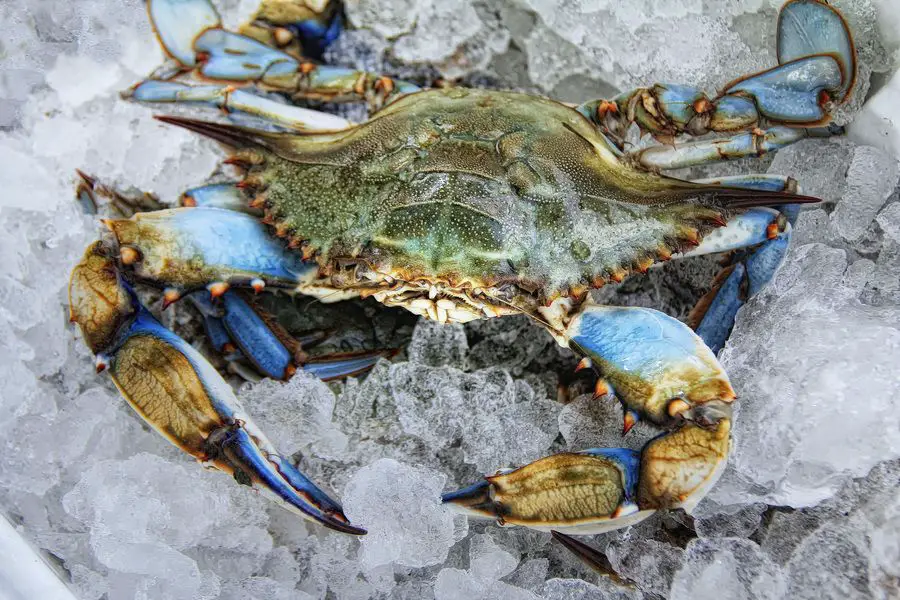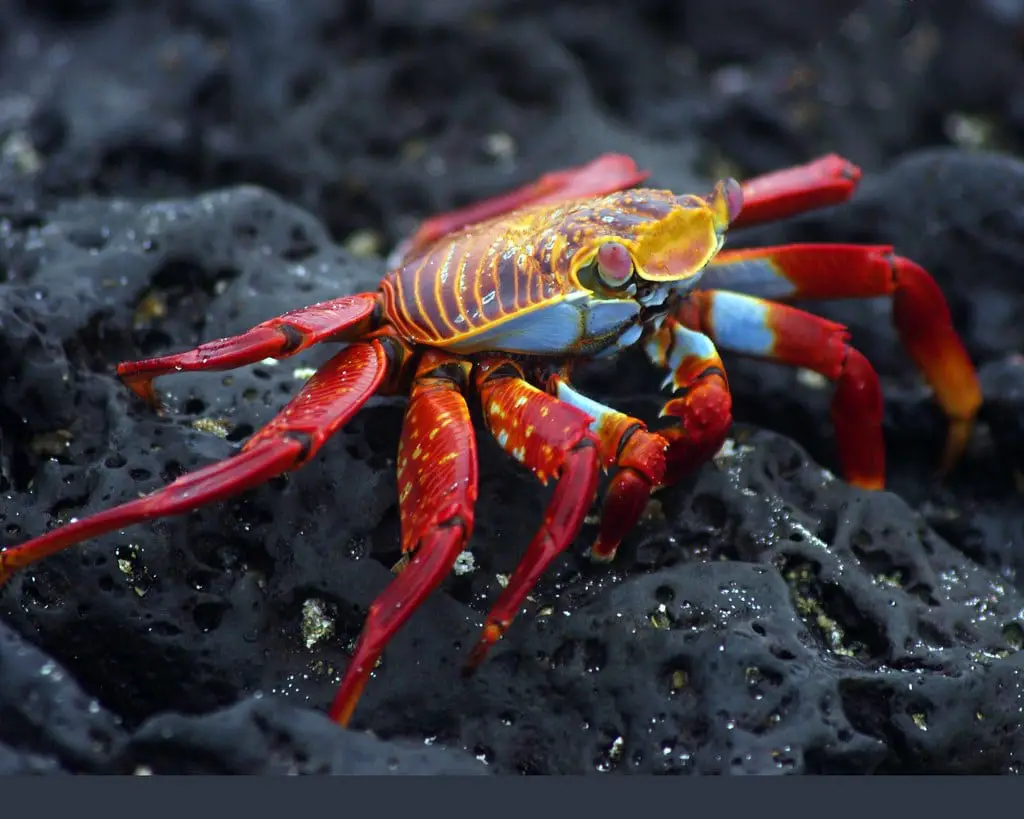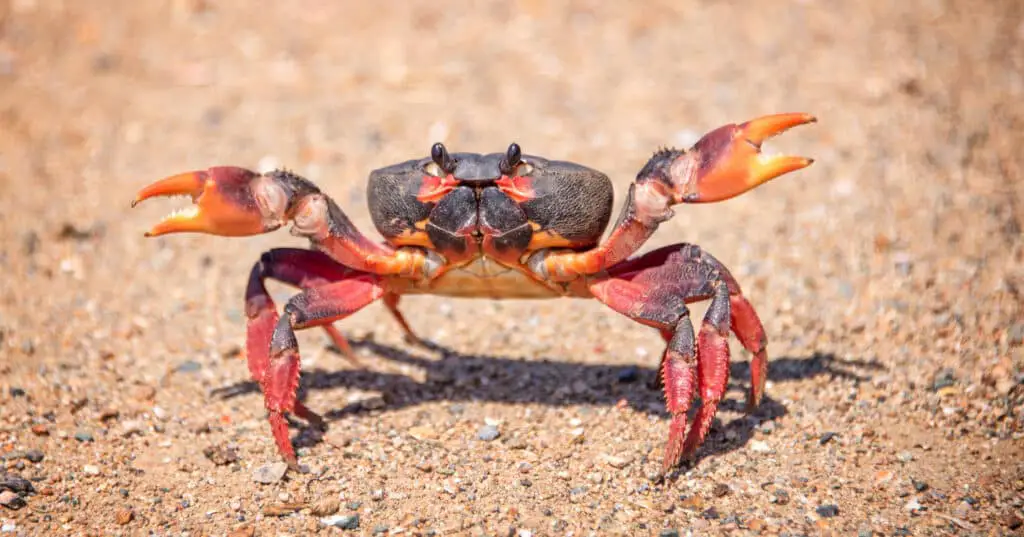How To Keep Crabs Alive

Introduction
How To Keep Crabs Alive: Keeping crabs alive is crucial whether you’re planning to enjoy them as a seafood delicacy or maintain them as captivating pets. The key to their survival lies in creating and maintaining an environment that replicates their natural habitat, ensuring they remain healthy and vibrant. This guide will provide you with essential insights and tips on how to keep crabs alive and thriving.
Crabs are fascinating creatures known for their diverse species and unique adaptations. They inhabit various aquatic environments, from saltwater coastlines to freshwater rivers, each with its own set of requirements for survival. Whether you’ve just caught crabs pets during a beachside adventure or acquired them as pets, understanding their needs is paramount.
In this comprehensive guide, we will delve into the key factors that influence crab survival, including water quality, suitable habitats, and proper handling techniques. You will discover how to maintain the right conditions, such as temperature, salinity, and oxygen levels, to ensure your crabs remain healthy and stress-free. Whether you’re a seafood enthusiast or a crab-loving pet owner, the knowledge you gain here will enable you to provide the best possible care for these remarkable crustaceans.

How long can you keep crabs alive after catching them?
Live crabs can be kept on ice for up to 24-48 hours at most, but cooking them within 8 hours is recommended. It is important to cook them immediately if they die. Mud crabs, Dungeness and Snow Crabs can be kept up to 48 hours if conditions are ideal. Blue crabs can be kept alive for up to 24 hours.
The length of time you can keep crabs alive after catching them depends on various factors, including the type of crab, environmental conditions, and how you handle them. Here are some general guidelines:
- Species Matters: Different crab species have varying tolerance levels for captivity. Some, like blue crabs, are hardier and can survive longer in captivity, while others may be more delicate.
- Environmental Conditions: To keep crabs alive, maintain a controlled environment. Store them in a cool, damp place, ideally at temperatures between 50-60°F (10-15°C). Keep them moist and provide adequate ventilation.
- Water Quality: If you catch crabs from saltwater, use seawater in a container or add marine salt to freshwater to create a suitable brackish environment. Regularly change a portion of the water to maintain water quality.
- Food and Shelter: Crabs need food and shelter. Provide them with pieces of fish, crab bait, or seafood scraps, and add hiding spots like rocks or small containers for them to seek refuge.
- Handling: Be gentle when handling crabs to avoid stressing or injuring them. Avoid dropping them from heights or overcrowding in a container.
In optimal conditions, you can keep crabs alive for a few days to a couple of weeks. However, it’s essential to release them back into their natural habitat as soon as possible to ensure their survival and maintain ecological balance. Always check local regulations regarding crabbing and release requirements to protect the crab populations and marine ecosystems.
What do crabs need to stay alive?
Crabs can live for several days if kept moist. They can ‘breathe’ only if their gills are moist. Once the gills dry out, they will die.
Crabs, like other aquatic organisms, have specific requirements to stay alive and thrive. These needs encompass their habitat, diet, and environmental conditions:
- Habitat: Crabs are primarily found in marine and freshwater environments. They require a suitable habitat that provides protection, including shelter and hiding places such as rocks, crevices, and burrows in the substrate. The type of habitat depends on the crab species, with some preferring sandy bottoms, while others thrive in rocky or mangrove-lined shores.
- Water: Crabs are highly dependent on water for respiration, movement, and temperature regulation. They need access to clean, oxygenated water to breathe through their gills. The salinity level and temperature of the water should be within a range suitable for their species.
- Diet: Crabs are omnivorous and scavengers. Their diet consists of algae, detritus, mollusks, small fish, and other organic matter. Providing an appropriate food source is essential for their survival.
- Temperature and pH: Crabs have specific temperature and pH range requirements depending on their species. Maintaining water conditions within these ranges is crucial for their health and survival.
- Safety: Protection from predators is essential for crab survival. Their hard exoskeleton provides some defense, but they also rely on hiding in crevices or burrows to avoid being preyed upon.
- Reproduction: For long-term survival of crab populations, suitable breeding and nursery areas are crucial. These areas should have appropriate water conditions and protection for crab larvae and juveniles.
Crabs need a suitable habitat with clean water, proper nutrition, protection, and suitable environmental conditions to stay alive and thrive in their natural ecosystems. Maintaining the health of these ecosystems is essential for the long-term survival of crab species.
Can crabs stay alive out of water?
However, unlike fish, blue crabs can survive out of water for long periods of time-even over 24 hours-as long as their gills are kept moist. When out of water, crabs will seek out dark, cool, moist places to help prevent their gills from drying out and to hide from predators.
Crabs are primarily aquatic animals, and their ability to survive out of water depends on various factors, including the species, size, and environmental conditions.
Most crab species cannot survive for extended periods outside of water. They have specialized gills that extract oxygen from water, which means they need a constant supply of oxygen to breathe. When removed from water, crabs begin to suffocate as their gills dry out, leading to oxygen deprivation. This can be fatal if they are out of water for too long.
However, some crabs have developed adaptations that allow them to tolerate brief periods out of water. For example, land crabs, such as the coconut crab, have modified gills that allow them to breathe air to some extent. These crabs can venture onto land, but they still require access to water periodically to stay hydrated and maintain their gills’ function.
In general, it is essential to minimize the time crabs spend out of water to ensure their survival. If you catch crabs or handle them, it’s advisable to return them to their aquatic environment as quickly as possible to prevent stress, dehydration, and potential harm to these fascinating creatures.
Will crabs stay alive in the fridge?
Storage. Live brown crabs can stay alive for three to four days if they are kept cold and damp, ideally in the bottom if your fridge covered with a damp cloth. Do not put into fresh water. They need regular checking, so that if they die, they can be cooked immediately.
Storing crabs in the fridge is not a suitable method for keeping them alive. Crabs are cold-blooded creatures, and the low temperatures in a typical refrigerator can quickly lead to their demise.
- Temperature: Refrigerators are kept at temperatures well below what most crab species can tolerate. Crabs are ectothermic, meaning their body temperature is regulated by their environment. Cold temperatures can slow down their metabolism to the point where they become lethargic and eventually die.
- Dehydration: Refrigerated air tends to be dry, and crabs, like all aquatic creatures, require a moist environment to survive. The dry conditions in a fridge can lead to rapid dehydration, causing stress and ultimately death for crabs.
- Lack of Oxygen: Crabs need access to oxygen, which is more limited in a closed refrigerator. They can suffocate due to reduced oxygen levels.
To keep crabs alive, it’s best to mimic their natural habitat conditions. Store them in a cool, damp place, ideally at temperatures between 50-60°F (10-15°C). You can use a container with damp seaweed or a wet cloth to maintain moisture levels. However, it’s essential to use this method only as a temporary solution until you’re ready to prepare or release the crabs into their natural environment.
How do you keep crabs alive for 24 hours?
The crabs need to be well oxygenated in order to stay alive. Place the cooler in a dark, shaded area away from the sun. This will also prevent the crab’s gills from drying out. Blue crabs can live out of the water for up to 24 hours as long as they are kept cool and moist.
Keeping crabs alive for 24 hours requires careful handling and maintenance of their environmental conditions to ensure their well-being during that time. Here’s how to do it:
- Container: Use a suitable container, such as a bucket or cooler, with a lid or cover to prevent crabs from escaping.
- Water: Place a layer of seawater or brackish water in the bottom of the container. Make sure the water is from the same environment where you caught the crabs to maintain salinity levels. Ensure the water is deep enough to submerge the crabs but not so deep that they drown.
- Moisture: Crabs need a moist environment to stay healthy. Add damp seaweed, wet burlap sacks, or a wet cloth on top of the crabs to maintain humidity and prevent them from drying out.
- Temperature: Keep the container in a cool, shaded area, ideally at temperatures between 50-60°F (10-15°C). Avoid direct sunlight and extreme temperature fluctuations.
- Aeration: Ensure there is some airflow into the container to provide oxygen for the crabs. However, don’t make the openings large enough for the crabs to escape.
- Food: While crabs can survive without food for a day, you can place small pieces of fish, crab bait, or seafood scraps in the container if you intend to keep them for an extended period.
- Handle with Care: Avoid rough handling, overcrowding, and stress to minimize the risk of injury or death.
By following these steps and maintaining suitable conditions, you can keep crabs alive for 24 hours, ensuring their well-being until you’re ready to release, cook, or use them for your intended purpose.
What are the key factors to consider when maintaining the water quality for keeping crabs alive?
Maintaining optimal water quality is essential for keeping crabs alive in captivity, and several key factors need consideration. First, it’s crucial to match the water’s salinity with the crab’s natural habitat, whether they originate from freshwater, brackish, or marine environments. This ensures their osmoregulation functions properly. Additionally, maintaining stable water temperatures within the preferred range for the specific crab species is essential, as sudden temperature fluctuations can stress or harm them.
Oxygen levels are vital since crabs respire through gills. Adequate oxygenation can be achieved through aeration equipment or regular water changes. The pH level of the water should also be monitored and adjusted as needed to remain within the preferred range for the crabs, preventing stress and health issues.
Furthermore, careful attention to ammonia and nitrite levels is necessary, as these compounds can accumulate from crab waste and uneaten food, becoming toxic. Implementing proper filtration systems helps remove debris and maintain water clarity and quality. To prevent water contamination, it’s essential to keep the crab’s container or aquarium clean by regularly removing uneaten food, feces, and debris.
Finally, minimizing stressors, such as loud noises or sudden changes in lighting, is crucial, as stress can weaken crabs and make them susceptible to illness or death. By addressing these key factors, you can create a conducive environment for crabs to thrive in captivity.
What is the proper way to store live crabs before cooking them to ensure their freshness?
Storing live crabs before cooking is essential to maintain their freshness and flavor. Here’s the proper way to do it:
- Keep Them Alive: Crabs should be kept alive until just before cooking to ensure their freshness. Place them in a well-ventilated container or crate, ideally in a cool, shaded, and humid area. Avoid overcrowding, as it can lead to stress and cannibalism.
- Moist Environment: Crabs need a moist environment to stay healthy. You can lay a damp cloth or seaweed over the crabs to maintain humidity. Don’t submerge them in water, as they might drown.
- Cool Temperature: Keep the crabs at a temperature between 50-60°F (10-15°C). Avoid direct sunlight or extreme temperature fluctuations, as these can stress the crabs.
- Handle with Care: When handling live crabs, be gentle to avoid injuring them. Hold them by the rear end of the carapace to prevent getting pinched by their claws.
- Inspect for Dead Ones: Before cooking, check the crabs for any dead ones. Discard any that are not moving, as they can spoil quickly and affect the quality of the others.
- Cook Promptly: Ideally, cook crabs as soon as possible after purchase. The longer they are stored, the more their freshness may deteriorate.
By following these steps, you can ensure that your crabs are as fresh as possible when you’re ready to cook them, resulting in a delicious seafood meal.
What are some essential tips for creating a suitable habitat to keep pet crabs healthy and thriving?
Creating a suitable habitat for pet crabs is crucial for their health and well-being. First, select an appropriate tank or enclosure based on the crab species you are keeping, ensuring it provides enough space for their movement and molting. Proper substrate, such as sand or coconut coir, is essential to create a comfortable burrowing environment, with a depth of at least twice the crab’s shell size for digging.
Maintaining the right humidity and temperature levels is vital for crab health. Regular misting can help maintain humidity at around 70-80%, and heating equipment may be necessary to keep the temperature within the recommended range for your specific crab species. Providing shallow freshwater and, for marine crabs, saltwater pools is essential to meet their hydration needs.
Offer a variety of hiding places like rocks, shells, or driftwood to provide security and reduce stress. A well-balanced diet comprising commercial crab food, fresh fruits, vegetables, and protein sources like fish or shrimp is crucial. Ensure you remove uneaten food promptly to prevent mold and bacterial growth. Regular habitat maintenance, including waste and exoskeleton removal, is necessary to keep the environment clean.
Lastly, consider the social nature of your crab species. Some crabs thrive in groups, while others are more solitary, so it’s essential to provide an environment that suits their natural behavior and preferences to keep them healthy and thriving.

Conclusion
Knowing how to keep crabs alive is essential for anyone who wishes to enjoy these fascinating creatures, whether as a delectable seafood treat or captivating pets. We’ve explored the critical factors that contribute to their survival, from maintaining proper water quality to creating suitable habitats and handling them with care. By following these guidelines, you can ensure that your crabs remain healthy, vibrant, and thrive in captivity.
Crabs are incredibly diverse in species, and they inhabit a wide range of aquatic environments. Understanding their specific needs and preferences is vital for their well-being. Whether you’re a seasoned crabber or a novice, this guide has provided you with valuable insights to help you provide the best possible care for your crabs.
For those who plan to enjoy crabs as a culinary delight, the knowledge gained here will ensure that the seafood on your plate is not only delicious but also ethically and sustainably sourced. Proper handling and storage before cooking can make a significant difference in the quality of your crab dish.
For crab enthusiasts who keep these crustaceans as pets, creating a suitable and nurturing environment is a rewarding endeavor. Watching your crabs thrive and exhibit their natural behaviors can be a source of fascination and enjoyment.
In the end, whether crabs are on your dinner table or in a well-maintained aquarium, the care you provide plays a vital role in their longevity and overall well-being. By following the principles outlined, You can take pride in being a responsible and knowledgeable crab keeper.



